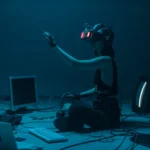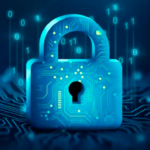Orchestra technology refers to innovative tools, systems, and software designed to enhance the capabilities of orchestras, conductors, and composers. As technology continues to evolve, digital advancements are transforming the traditional art of orchestral music, offering new ways to compose, perform, and experience music. This article will explore how orchestra technology is reshaping the music industry, providing a closer look at its applications, benefits, and future potential.
What is Orchestra Technology?
Orchestra technology encompasses a variety of tools that improve the efficiency, creativity, and precision of orchestral music production. From digital sheet music to advanced audio systems and artificial intelligence, this field is continuously evolving. These tools help musicians manage complex compositions, facilitate collaboration, and enhance live performances.
Critical Components of Orchestra Technology
- Digital Sheet Music: Digital sheet music platforms allow musicians to access and interact with musical scores on their devices. These tools often come with features like real-time synchronization, annotations, and the ability to change keys or tempos instantly.
- Music Production Software, such as Logic Pro, Ableton Live, or Sibelius, allows composers to create, arrange, and orchestrate music with incredible precision.
- Live Performance Technology: Digital audio workstations (DAWs) and audio processing systems enhance live performances with effects, amplification, and sound mixing.
- Artificial Intelligence (AI) and Machine Learning: AI is used to compose music, analyze patterns in orchestral pieces, and even assist in conducting by providing real-time feedback to musicians.
How Orchestra Technology is Enhancing Composers and Conductors
Orchestra technology has been instrumental in streamlining the work of composers and conductors, offering new ways to collaborate, compose, and manage performances. Here are some specific ways this technology is making an impact:
Composers
- Digital Composition Tools: Programs like Finale or Sibelius help composers create intricate scores with ease. These platforms also offer playback features, enabling composers to hear their compositions before the orchestra performs them.
- Virtual Instruments: With virtual instruments, composers can simulate the sounds of an entire orchestra on their computers. This helps them test different arrangements without bringing together a full orchestra.
Conductors
- Conducting Software: Some software tools allow conductors to practice and rehearse with a virtual orchestra. These programs use advanced algorithms to simulate real-time orchestral performances, allowing conductors to refine their movements and timing.
- Real-Time Feedback Systems: Through sensors and AI technology, conductors can now receive immediate feedback on their conducting, helping them to adjust tempo, dynamics, and precision during rehearsals.
Benefits of Orchestra Technology
Integrating technology into orchestral music offers numerous benefits for musicians, composers, conductors, and audiences. Some of the key advantages include:
Improved Efficiency
- Time Savings: By using digital platforms for composition, musicians and composers can save time in creating, editing, and sharing musical scores. Digital tools also help streamline rehearsal schedules and reduce the need for physical sheet music.
Enhanced Creativity
- New Musical Possibilities: Technology allows composers to experiment with different orchestral arrangements, sounds, and effects, pushing the boundaries of creativity.
- Collaboration: Orchestra technology enables musicians worldwide to collaborate virtually, sharing compositions and recordings in real time.
Better Live Performances
- Sound Enhancement: Advanced audio systems and sound mixing technology improve the acoustics during live performances, ensuring that the audience hears every note clearly.
- Interactive Performances: Technology allows orchestras to engage the audience in new ways, such as integrating visual elements like projections or interactive soundscapes.
Future Potential of Orchestra Technology
As technology continues to advance, the future of orchestra technology holds immense promise. Innovations like virtual reality (VR) and augmented reality (AR) may revolutionize how we experience live performances. Imagine attending an orchestra concert where you can interact with or view the music from different angles in a fully immersive VR environment. Additionally, AI will likely continue to play a significant role in composition and performance. It may not be long before AI-powered systems can compose entire symphonies or assist conductors in real time, offering suggestions to improve timing, tempo, and dynamics.
Conclusion
Orchestra technology rapidly evolves, offering exciting possibilities for composers, conductors, and musicians. By enhancing efficiency, fostering creativity, and improving live performances, technology is helping to shape the future of orchestral music. As we look ahead, integrating AI, VR, and AR promises to transform how orchestras operate further, making music more accessible and engaging for audiences worldwide.
FAQs about Orchestra Technology
What is orchestra technology?
Orchestra technology refers to the tools, systems, and software designed to enhance orchestral music’s creation, performance, and management. This includes digital sheet music, music production software, AI-based composition tools, and live performance technology.
How does technology help composers in orchestral music?
Technology helps composers by providing digital platforms like Finale and Sibelius, where they can easily compose, edit, and arrange music. Virtual instruments allow composers to simulate orchestra sounds on a computer, enabling them to hear their compositions before a live performance.
Can AI be used in orchestral music composition?
Yes, AI can compose music by analyzing patterns in existing compositions and creating new works based on these patterns. AI tools also assist conductors by providing real-time feedback on timing, dynamics, and tempo during rehearsals.
What are the benefits of digital sheet music?
Digital sheet music allows musicians to access scores on their devices, offering features such as real-time synchronization, note annotations, and easy adjustments of tempo or key. This eliminates the need for paper scores and allows for a more efficient and organized approach to practice and performance.
How does technology improve live performances?
Technology improves live performances by enhancing sound quality through advanced audio systems and mixing tools. Additionally, interactive technology, like projections and augmented reality, can be integrated into performances to provide a unique and engaging experience for the audience.
What is the future of orchestra technology?
The future of orchestra technology looks promising, with developments in virtual reality (VR) and augmented reality (AR) potentially changing how audiences experience live concerts. AI will also continue to play a more significant role in assisting with composition and performance, generating entire symphonies or assisting conductors in real time.
Can orchestra technology make classical music more accessible?
Yes, orchestra technology has the potential to make classical music more accessible by offering new ways to engage with music. Through virtual concerts, interactive performances, and digital platforms, a wider audience can experience and appreciate orchestral music from the comfort of their own homes.





